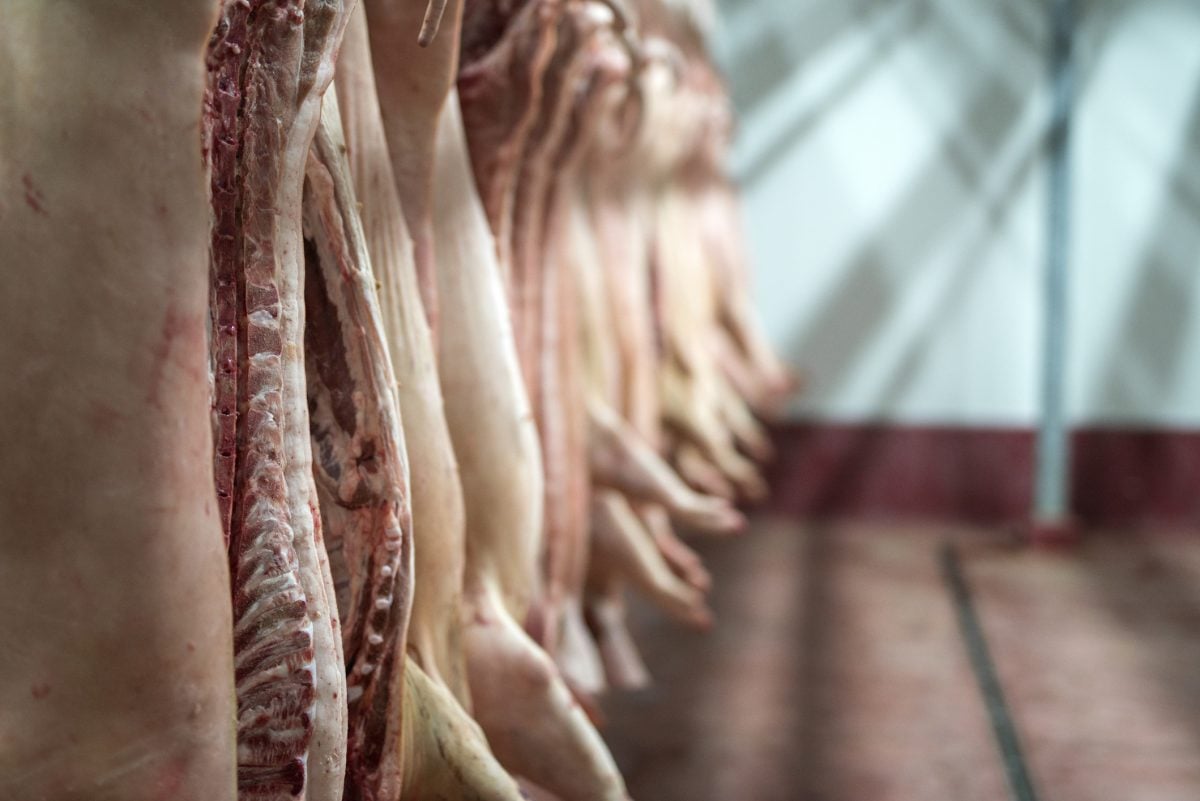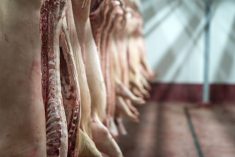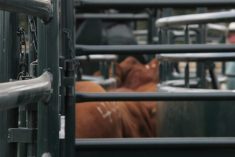CHICAGO, March 22 (Reuters) – The number of cattle placed in U.S. feedlots in February fell to the lowest for the month in 17 years, a government report showed on Friday, a sign that prolonged drought continued to impact the industry.
A separate U.S. Department of Agriculture storage report showed that pork stocks at the end of February were record high for month, which analysts attributed to a slow down in pork exports and sluggish domestic demand.
USDA’s monthly cattle-on-feed data showed the number of animals placed in U.S. feedlots in February fell 14 percent year-over-year to 1.482 million head. It was the smallest placement figure for the month of February since USDA began the dataset in 1996, analysts said.
Read Also

U.S. livestock: Cattle slip back, hogs gain
Chicago cattle futures slipped back on Friday after Thursday’s pause. Hog futures crept upward. Most-active December live cattle futures closed…
The placements surprised analysts who predict the low number could have CME live cattle futures opening 0.500 to 1.000 cent per pound higher on Monday.
USDA put the supply of cattle in feedlots on March 1 at 10.857 million head, or 93 percent of the year earlier. Analysts polled by Reuters, on average, expected 93.6 percent.
The government said the number of cattle marketed to packers in February was down seven percent from a year earlier at 1.638 million head versus forecast for a 7.1 percent decrease.
While the marketing and supply numbers were neutral because they were close to trade estimates, placements came as good news to a market recently pressured by bearish fundamentals, said University of Missouri livestock economist Ron Plain.
“Fewer days last month offered less opportunity for ranchers to place cattle into feedlots. And feeders have been losing a lot of money, offering no incentive for them to buy younger cattle,” said Plain.
Historically high corn prices, due to persistent drought in the U.S. Plains, severely damaged feedlot margins and reduced demand for younger cattle.
Placements were further constrained by smaller pool of feeder cattle after the prolonged dryness shrunk the overall cattle herd to its smallest in 61 years.
And wintry weather last month snarled the transportation of cattle to feedyards and to packing plants.
“The weather storms must have been very disruptive for the flow of placements. At some point when the weather starts to moderate, I suspect we will see this level out,” said Linn Group analyst John Ginzel.
He viewed the placements as supportive to deferred CME live cattle futures while lackluster demand for meat in general could pressure the nearby contracts.
“The product market continues to be a bit of a mess on beef and pork. It is difficult to be bullish the back trading months when the front months are laboring,” he said.
RECORD PORK STOCKS
Separate USDA data put end-of-February pork stocks at 636.7 million lb. — the highest ever for that month.
A Russian ban on U.S. beef, pork and turkey because of ractopamine, a feed additive used to promote meat leanness, likely contributed to pork backing up in U.S. warehouses, analysts said.
Also, China ramped up hog production, meaning it likely bought less pork from the United States, they said.
“The ham market literally came apart at the seams this week due to the lack of export demand and fairly large ham stocks,” said Ginzel.
“The Chinese have their own internal food policy to stimulate production and they paid their producers to do that,” he said.













